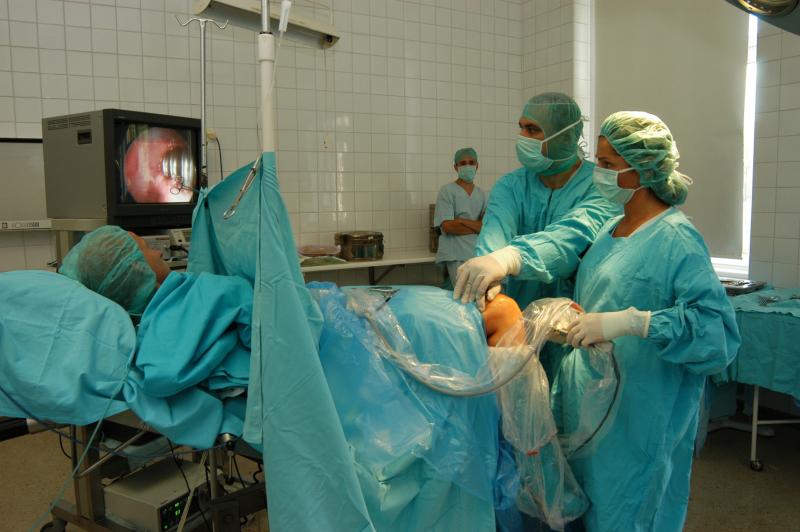 Laparoscopy surgery in action
Laparoscopy surgery in actionSurgeons performing minimally invasive laparoscopy (LAP) experience long-term static muscle activity with a high physical workload, a study has shown. In contrast, a robot-assisted laparoscopic surgery (RALS) appears to be less demanding on posture.
It is believed that conventional LAP and RALS differ in terms of the surgeon’s comfort. To confirm this, the authors compared muscle workload, work posture and perceived physical exertion of surgeons performing LAP or RALS. Thirteen colorectal surgeons with experience in advanced LAP and RALS carried out one of each operation in this study.
Bipolar surface electromyography (EMG) recordings were done from forearm, shoulder and neck muscles and were expressed relative to EMG maximum (%EMGmax). The authors calculated the static, median and peak levels of muscle activity and conducted an exposure variation analysis. They observed postures every 10 min and recorded the ratings of perceived physical exertion before and after surgery.
LAP surgery required higher static, median and peak forearm muscle activity as compared to RALS, but RALS showed higher muscle activity at peak level than LAP. In exposure variation analysis, long-lasting periods of low-level intensity muscle activity was observed in the shoulders for LAP, in the forearms for RALS and in the neck for both procedures.
Furthermore, postural observations showed a greater need for a change in work posture when performing LAP compared with RALS. There was no difference in perceived physical exertion between the surgical modalities.